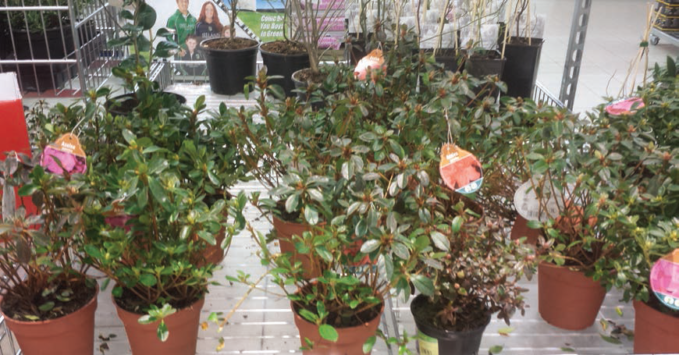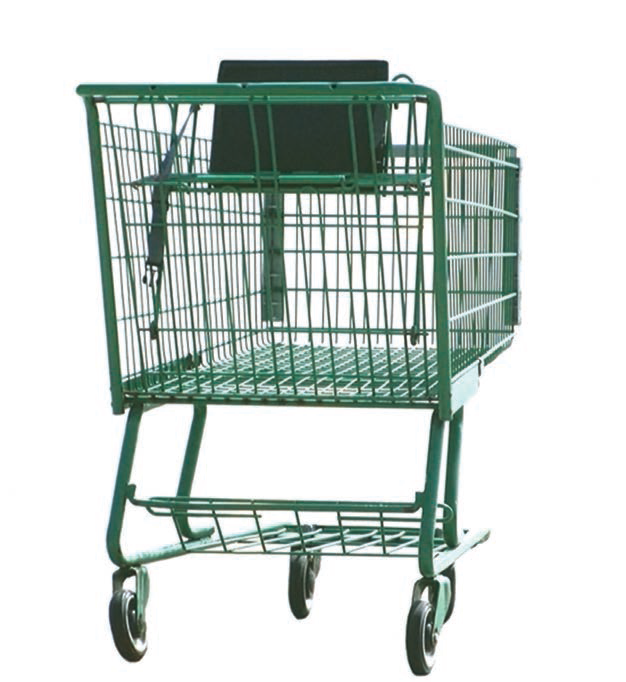Leading retail consultant Liam Kelly explores positive and negative impacts on discount chains on the Irish gardening market and provides some tips on how you can learn from what they do
My home town has changed dramatically in the last couple of decades. Up to the early nineties, 80% of the retail activity happened on 500 metres of the main shopping street and had done for decades if not centuries before. In the late nineties, all this changed. Pockets of shopping islands – it’s wrong to call them centres as this implies one area of activity – sprouted up in retail parks outside the ring of housing estates that once circled the town. The original centre of the town went into a decline which it hasn’t recovered from, and was replaced by a number of retail locations all anchored by various supermarkets or multiple-store retailers. Where once we had two or three supermarkets we now have around ten plus all the other chain stores that follow on and the parking spaces that are then required.
And my home town is by no means unique, as the same thing has occurred in virtually every reasonable sized town in this country, and most other modern countries for that matter.
Along with this blurring of the urban landscape came a change in how we buy our groceries, with the weekly ‘Big Shop’ going into decline as consumers instead do multiple shopping trips to different supermarkets for different products, depending on the offers and ranges in those stores. Of course, the sheer choice of so many different supermarkets also had an effect on this new way of shopping.
The other big change was that supermarkets started targeting sectors other than groceries, homeware and clothing. They started selling DIY products and power tools, cycling and skiing gear, TVs and audio equipment, and of course garden products and plants.
Up until then supermarkets just toyed with plant sales, with the odd trolley of bedding in season or a few chemicals and fertilisers, but suddenly – led by the German supermarkets – they began selling every manner of plant and garden care product. Some would argue, wrongly or rightly, that the products are inferior, or that the shelf life and before sale care of the plants is not as good as garden centres and other traditional gardening retailers, but you can’t argue with the fact that they really know how to sell product and promote it.
So now all of the supermarkets dabble to a greater or lesser extent in gardening, as do the discount chains and ‘pound shops’, and other DIY and home stores take their cut too. The fact is, they are as entitled as anyone to sell these kinds of products, as are the public entitled to buy from whomever they like, but it doesn’t mean that garden centres need, or have to, accept it.
“The traditional way many retailers deal with someone stepping on to their ‘patch of grass’ is to dismiss them offhand”
The traditional way many retailers deal with someone stepping on to their ‘patch of grass’ is to dismiss them offhand, whinge about them to anyone who will listen, or to simply ignore them. All of which are dangerous ways of dealing with the issue.
SO IS THIS ALL BAD NEWS FOR THE GARDEN CENTRES AND GARDENING AS A WHOLE?
Are there any positives we can take from any of these stores and how they sell? What can garden centres learn from them? In other words, what can you do about them?
WELL, OF COURSE, THERE ARE NEGATIVES, AND IT WOULD BE FOOLISH TO THINK OTHERWISE
Customers who would have traditionally visited garden centres to make their seasonal purchases can, and do, now purchase fertiliser, tools and plants from their local supermarket and discount shop and can use the internet to look up relevant information for these products. This is to some degree because of price but also because of convenience.
Quality issues with plants that have been left sitting on trolleys for days if not weeks without getting water, correct temperature, or natural light can be an issue. It might put consumers off gardening as these plants invariably die after planting. This could be seen also as a positive as it might put more avid gardeners off buying plants in these stores, making them stick to the garden centres instead.
Also, garden centres, which are traditionally seen as high-priced in the consumer’s eye, might come off looking even more expensive when a chain store with oodles of buying power, buys and sells some of it products at much lower prices than would be considered ‘normal’.

BUT THERE ALSO POSITIVES…
Because so many retailers now sell some form of gardening or outdoor living product then surely it raises the awareness of gardening as a hobby and of this – weather-dependent admittedly – outdoors focussed lifestyle in the consumer’s mind? Holistically speaking, this should help all garden retailers.
Also, it helps focus the consumer’s mind on the seasonality of gardens and what should be planted at various times of the year. Apart perhaps from the unscrupulous, or maybe just ignorant, discounters who try to still sell narcissus and snowdrops in May! That awareness is something that an older generation understood, but that much of the newer one has only a vague idea about.
One of the most important issues is of course that it gets non-gardeners interested in gardening as a whole. One would like to think that they might buy a few bits and pieces of gardening products with their grocery shopping, then discover that they like the hobby and start visiting garden centres who will have a bigger range of stock as well as the important ability to answer their questions.
Irish growers supply some plants to supermarkets, especially the bedding plants and similar stock that doesn’t take kindly to being stuck in a trailer during a long journey from the Continent. This is obviously a contentious issue with the garden centres, whom they also supply, but it’s a positive for horticulture as a whole, although many – understandably – won’t see it that way.
The snob factor also helps, as many garden centre customers would not be seen dead in a discount store or a (wrongly) perceived ‘cheap’ supermarket, let alone buying plants there! But this is changing rapidly.
“It helps focus the consumer’s mind on the seasonality of gardens and what should be planted at various times of the year”


“Use mark-downs effectively, as they do. If the stock is sitting on your floor and you’ve tried everything else, then sell it off cheaply. Better still, plan for that mark-down and build it into your margin”
SO, WHAT CAN WE DO ABOUT, AND LEARN FROM, ALL THESE RETAILERS?
WELL, LOADS REALLY…
● Visiting discount stores would be a big help, if you don’t know your perceived competitors then you are at an immediate disadvantage.
● Get to know what they do and when they do it by checking out their websites and storing up those nice weekly offer flyers.
● Plan your season and promotions as well as or better than they do, and promote what’s coming next week in your store.
● Market these promotions effectively and most importantly, professionally.
● Use merchandising and theatrics to entertain and entice your customers – supermarkets and discounters can’t do this.
● Use keen pricing on key items to draw customers into your store, that’s 80% of the battle at least. Use tricks like showing the consumer what they are saving.
● Signage, especially at point-of-sale, is one of the key incentives to purchase. Make sure you are telling the consumer what they need to know.
● Use mark-downs effectively, as they do. If the stock is sitting on your floor and you’ve tried everything else, then sell it off cheaply. Better still, plan for that mark-down and build it into your margin.
● Upsell – if they have a small size plant or package of fertiliser then you should advertise a bigger and better value one.
● Exploit and promote your garden centre as a knowledge bank, a friendly environment where customers can access one to one advice.
● Build bigger bonds within your local community emphasising your localness, and target plants and products to suit local climates and conditions.
These supermarkets and discounters are all run by sharp cookies, or many sharp cookies in reality. They are not going to go away so garden centres will have to learn to deal with them and take it from them. So ignore them at your peril.
Ironically, the first garden centre I ever worked in is now the site of a nice German supermarket. I shop there regularly. I don’t buy my plants there though! ✽
  Liam can be contacted at Retail Services & Solutions, 118 Dolmen Gardens, Pollerton, Carlow. 086 822 1494 or 059 913 0176, lksolutions@eircom.net www.lksolutions.blogspot.com |








